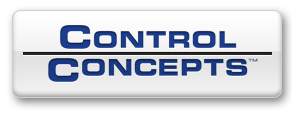PROGRAMMABLE LOGIC CONTROLLER (PLC) SERVICE & REPAIR
A Programmable Logic Controller? What Is That?
A programmable logic controller, or PLC for short, is the “brain” for your equipment’s relay control, motion control, industrial output, and output process control.
It supports the communications for control and data acquisition for industrial automation and facility control applications. You can program it to start and stop motors and process mathematical computing operations, among other things.

How Does a PLC Work?
A PLC makes its “decisions” based on the input it receives from the devices it controls.
Input goes into PLC —> PLC makes changes according to its programming —> Output from PLC makes changes to attached devices
Some activities are “hard-wired” for safety and easy disablement without the intervention of the PLC:
- Emergency stops
- Master start pushbuttons
Why You Should Modernize Your Relay Control System with a PLC
PLCs come with an array of benefits and advantages over non-programmable controllers:
- Increased reliability
- Decreased energy use
- Reduced space requirement
- Increased flexibility of use
- You can manage multiple machines simultaneously
- Higher levels of machine integration and process automation
- Increased production
- Lower operational costs
And you can connect a lot of things to a PLC:
- Remote I/O
- Switches
- Sensors
- Other control devices
- Operator interfaces
- Other PLCs
What Makes It Go?
We help you program your PLC with an algorithm developed from the control task definition and the control strategy needed to complete the action.
Control Task: specifies what must be done
Control Strategy: sequence of steps to produce desired output control
The control task is defined by the user involved in the operation of the machine or the process.
Program coding is the process of translating a logic or relay diagram into a PLC ladder program form. From a defined sequence of events, the PLC is told to record, analyze, or communicate inputs and outputs through a logic gate representing the I/O device.
We like to design our algorithms from a description developed with the user, and then we place that information into a flowchart so that we have a picture of what needs to happen.
Documentation (We Don’t Forget to Write Things Down)
We create an I/O assignment table to keep track of the names, locations, and descriptions of the real inputs and outputs of the process. Then we set up an internal address assignment table record of locations and descriptions of the internal outputs, timers, and counters.
Finally, a register address table is developed that lists all of the available PLC registers.
PLC Field Service
Our technicians offer around the clock PLC field service and repair. You don't need to wait for business hours - we can quickly perform needed repairs or programming to get your systems back up and running fast. We offer complete and convenient emergency service and repair anytime, 24 hours a day, seven days a week.
We know that any machine downtime can be costly. That's why our technicians respond with the urgency you deserve. Give us a call today to learn more about our field and emergency repair service.
Special Cases in PLC Programming
Most programming is straightforward, and some is pretty standard from operation to operation. However, there are some situations where that isn’t the case.
- Translations of normally closed input devices
- Fenced MCR circuits
- Circuits allowing bidirectional power flow, instantaneous timer contacts, and complicated logic rungs
PLC programming is less straightforward in these cases because of how the PLC normally operates.
PLCs do not allow bidirectional power flow, so all the rungs must be programmed to run in a forward path.
PLCs do not provide instantaneous timer contacts, so an internal output must be used to trap the timer requiring these contacts.
Complicated logic rungs are isolated from other rungs during programming to allow the complex action to be performed.
Open and closed input devices sound deceptively simple but whether the contacts are normally open or closed depends on the operating requirements of the logic program. In certain cases, an input device must normally be closed; therefore the reference address must be programmed as normally open.
Control Concepts understands the ins and outs of Programmable Logic Controllers and can help you with your PLCs 24/7.





































